Chief Sustainability Officers: women are more favorable for the role

Women are more suited to sustainability lead roles but only 25% of these positions might be occupied by women by 2030. What can businesses do to effectively bridge this gender gap that would ultimately help in achieving net-zero emissions?
If companies are genuinely committed to climate objectives and reaching net zero, embedding sustainability into their business strategy is imperative. This means assisting necessary alterations in their corporate structures and making the way for women to leadership positions.
Without any specific cause, women who hold the necessary qualifications display a greater inclination toward taking action and adopting a problem-solving approach when addressing climate change.
The UN agrees that communities achieve higher success rates in their strategies for resilience when women are actively engaged in the planning phases.
Women in sustainability
The Boston Consulting Group (BCG) forecasted that women will hold about 25% of green jobs worldwide by 2030. This is expected to delay the advancement of gender equality by 10 to 15 years.
Figure 1 compares the jobs dedicated to the green economy in 2021 and 2030. With 88 million jobs in green sectors, women made it to about 29% in 2021. The number of jobs is expected to go up to 155 million in 2030 but the women’s involvement will go down to 25%.
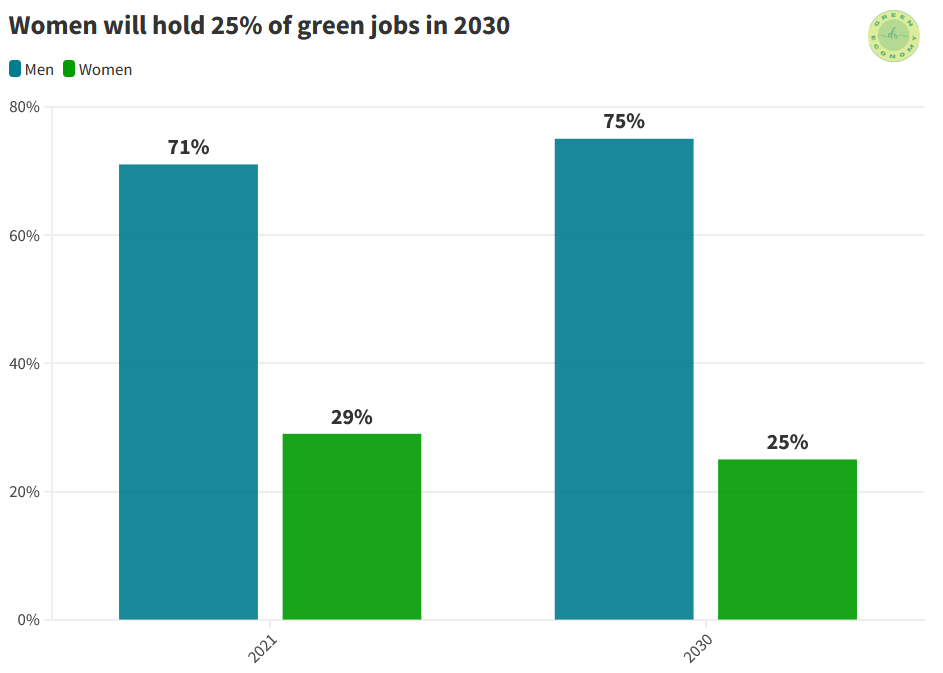
Zineb Sqalli expressed why the number could go down in her TED talk. “STEM-based industries are projected to invest approximately $500 billion in the training of their workforce for emerging green skills by 2030. However, given the existing under-representation of women in these sectors, they might face lower engagement in these training initiatives, consequently increasing the skills gap”, says Sqalli.
At this stage, it will demand roughly 132 years to achieve gender equality. This alarming figure requires immediate endeavors aimed at tackling the obstacles and promoting women's equitable engagement in employment.
This can be achieved by involving women's ideas in the project's planning phase, even when the project isn't exclusively directed at women, and evaluating the project's effect on them while making adjustments as needed.
Read: Sustainability jobs: 42 million renewable energy jobs by 2050
Empowering women means a win for the businesses
Globally, within the corporate sphere, the majority of the crucial decision-making positions predominantly remain under men. Figure 2 shows the percentage of women in management positions by region. The comparison is made for 2016, 2019 and 2021.
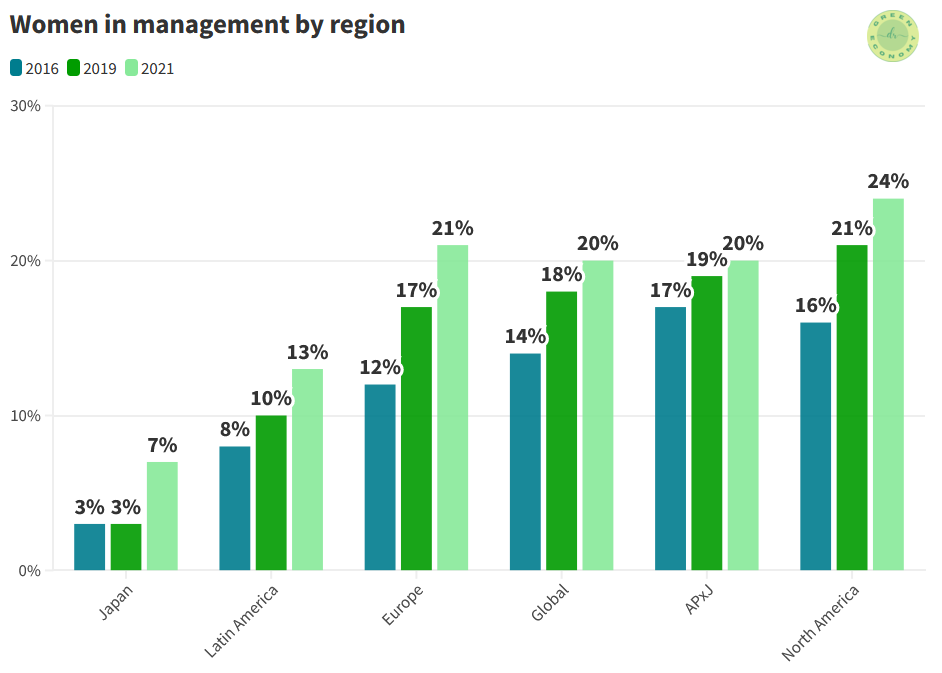
The percentage of women in managerial positions has definitely gone up in later years. North America has the highest percentage with 24% in 2021. Women held about 20% of positions globally in 2021— that is 2% and 6% up from 2019 and 2016, respectively.
Following the Paris Agreement, companies that enhanced gender diversity within their staff exhibited a 5% greater reduction in CO2 emissions than those where men held the majority of managerial roles.
Because companies that experienced an increase in women's involvement on their boards attained reductions in energy usage, greenhouse gas emissions, and water consumption.
In the field of renewable energy, more opportunities are open to women although they presently account for merely 16% of positions in the worldwide energy sector. In the United States (U.S.), this proportion is relatively higher at 30%, yet women still hold a smaller portion of clean energy roles in comparison to the traditional fossil fuel sectors, as reported by Canary Media.
Read: When will fossil fuels run out?
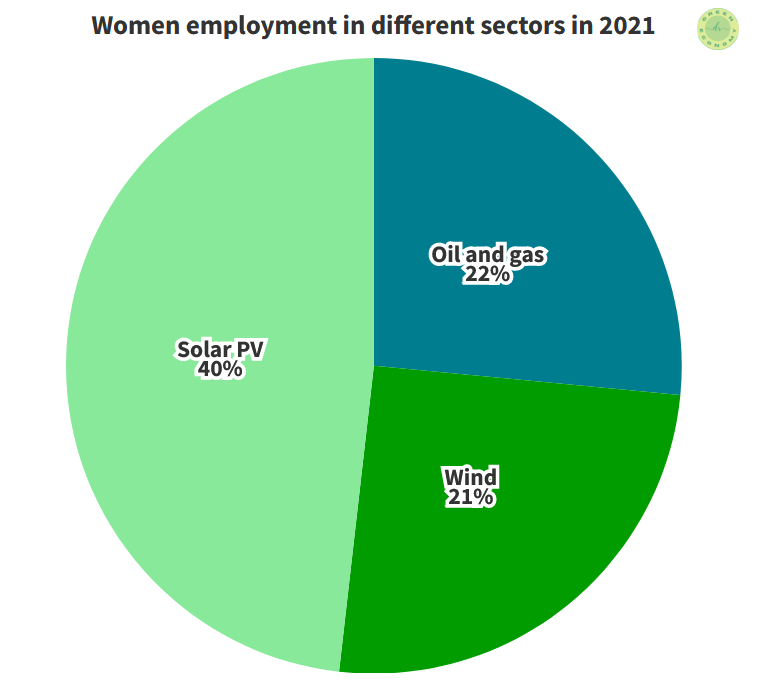
However, women's employment in solar PV as part of renewables in 2021 was impressive (see Figure 3)— about 40% of the position belonged to women worldwide. The IRENA's World Energy Transitions Outlook 2022 report anticipated a generation of 139 million employment opportunities by 2030 globally. Of which around 38.2 million positions will be linked to renewable energy. This offers a chance to equip a diverse and equitable labor force with new skills.
Read: Disadvantages of renewable energy
Chief Sustainability Officers
Climate change has a disproportionately severe impact on the most susceptible individuals, regardless of whether they live in developed or developing nations.
Women are well aware that they frequently encounter elevated risks and more significant challenges, particularly in circumstances of poverty and as a result of prevailing roles and duties.
A 2018 report by the Business and Sustainable Development Commission says women possess the essential leadership attributes required for engaging in sustainable development, driven by their inclination to address environmental and social challenges.
Their "feminine," characteristics, such as collaboration and an ability to simplify intricate matters contribute to the success of Chief Sustainability Officers’ (CSOs) roles. This could be the reason that women are naturally attracted to sustainability-related managerial positions.
Only in the U.S., the presence of females in CSOs positions rose to 54% in 2021, a marked elevation from 28% in 2011. The GreenBiz reported that women in any sustainability-related managerial positions have seen the most significant growth, advancing from 39% to 63% from 2011 to 2020 in the U.S. (see Figure 4).
The other positions, vice president roles, and directors also increased but not to a similar level.
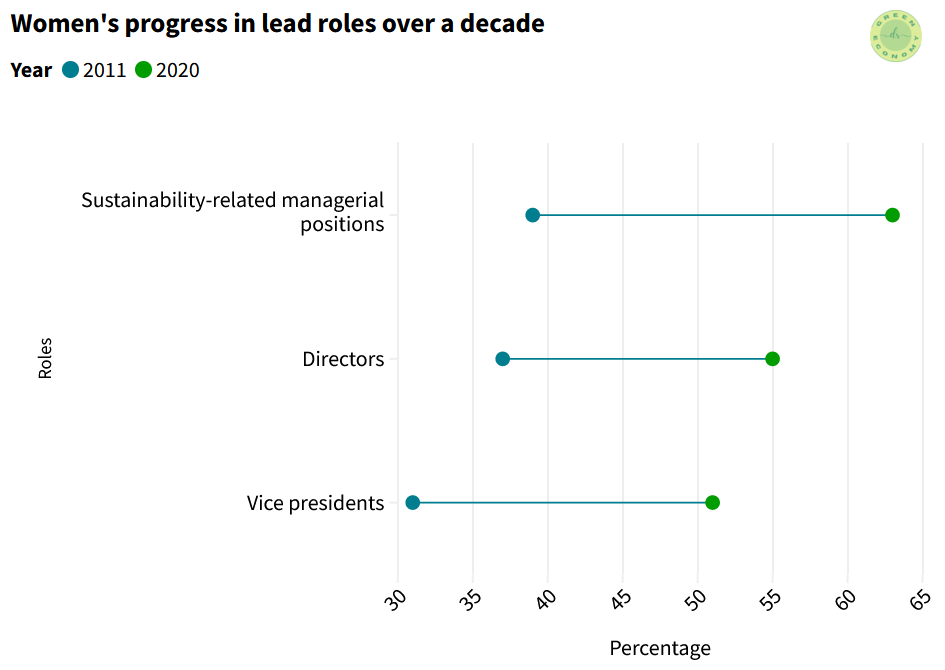
The CSOs' roles have emerged in response to the pressing climate emergency. This means it doesn’t require a rigid set of qualifications, resulting in a more diverse range of paths to leadership. Hence, becomes more favorable to women who require flexibility in their professional life.
How to support women to support your business?
Women’s involvement in popular leadership positions is still at a minority level (see Figure 5). Harnessing the talents of women offers numerous advantages and minimal drawbacks. But how do we do that?
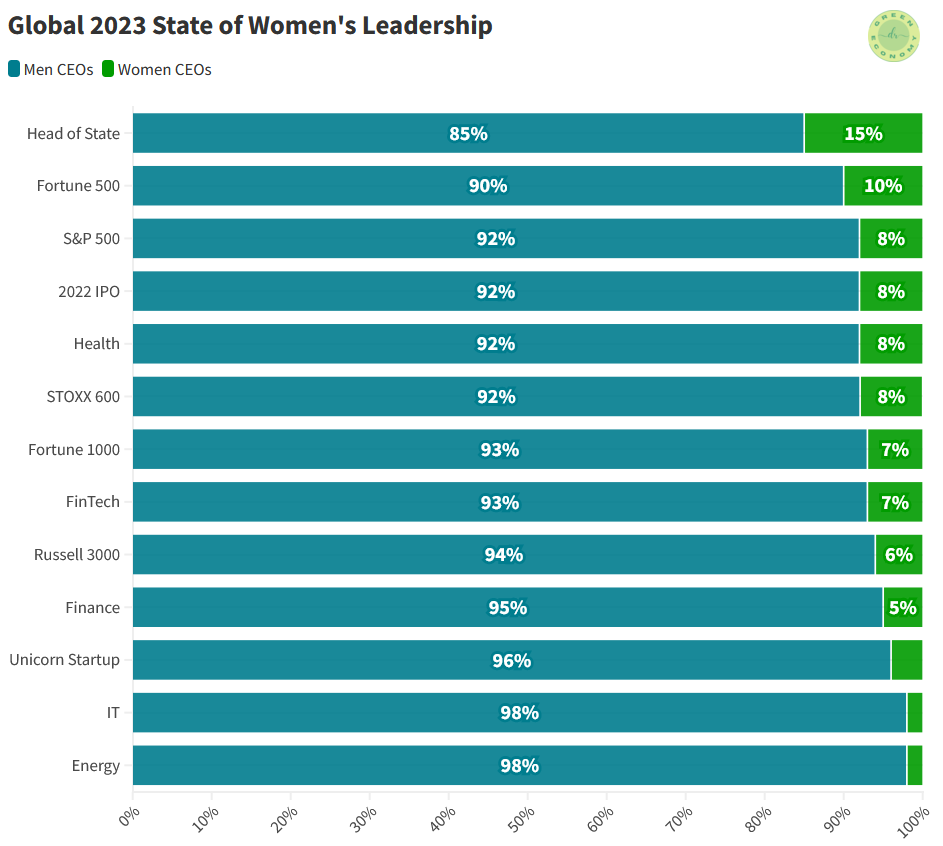
- Investing in educational and training programs that empower women with the required skills for green industries. Offering comprehensive childcare services can assist working women and enable their complete dedication to the workforce.
- Addressing unconscious biases, closing the wage gap, and instituting measures to prevent workplace harassment are fundamental actions toward cultivating a supportive environment for women.
- Evolving legislative advancements for broader employment prospects within the clean energy domain. For example, the Inflation Reduction Act in the U.S. has accelerated renewable energy job opportunities. As per Solar Reviews, this initiative has stimulated residential solar installation companies, leading them to recruit around 340,400 extra workers within the upcoming five years.
- Engaging the entire population in climate action, which means all genders, not only men. The inclusion of women, representing diverse backgrounds, is imperative across all levels– from climate negotiations to boardrooms, as well as in ecosystems like forests and fields, particularly in areas adversely affected by the impacts of climate change.
- Empowering women in agriculture can also create a favorable influence on climate adaptation. Within developing nations, women comprise almost half of the agricultural workforce and they have the potential to escalate their agricultural yields by 20-30%. By furnishing suitable technology and resources, we can advocate for more sustainable farming and conservation methods.
The sooner we acknowledge the latent potential of women in such positions, the sooner can we deliver advantages across diverse sectors. That brings our substantial contributions to the promotion of sustainable practices and the achievement of climate-related goals.
Summary
- Facilitating changes in corporate structures and promoting women's leadership positions are crucial for climate change goals.
- Women with the right qualifications tend to be more proactive and solution-oriented in addressing climate change.
- The UN recognizes that involving women in planning processes leads to higher success rates in community strategies for resilience and capacity-building.
- The Boston Consulting Group (BCG) predicts women will hold only 25% of green jobs globally by 2030.
- Companies with greater gender diversity in senior management show increased reductions in CO2 emissions.



